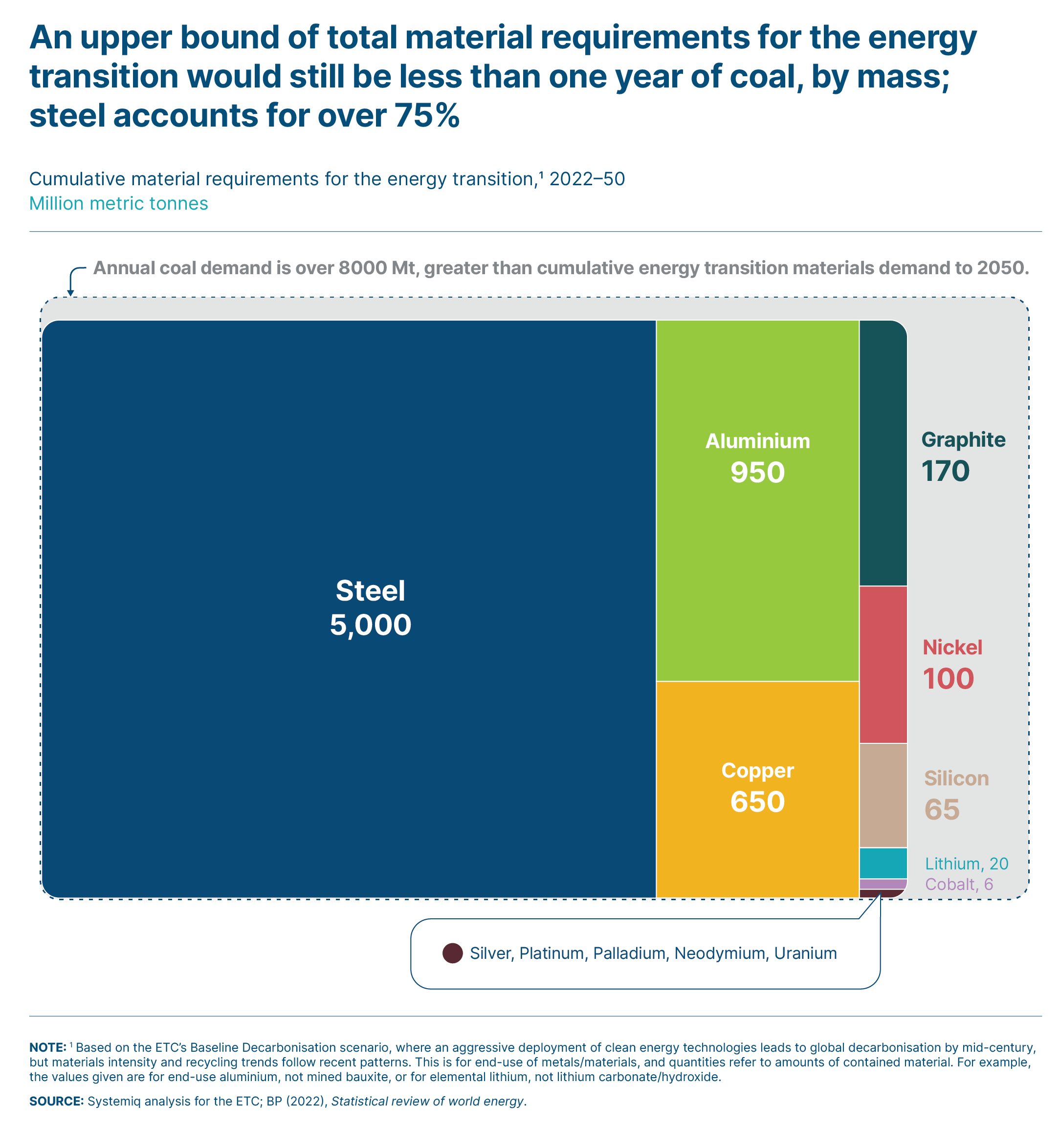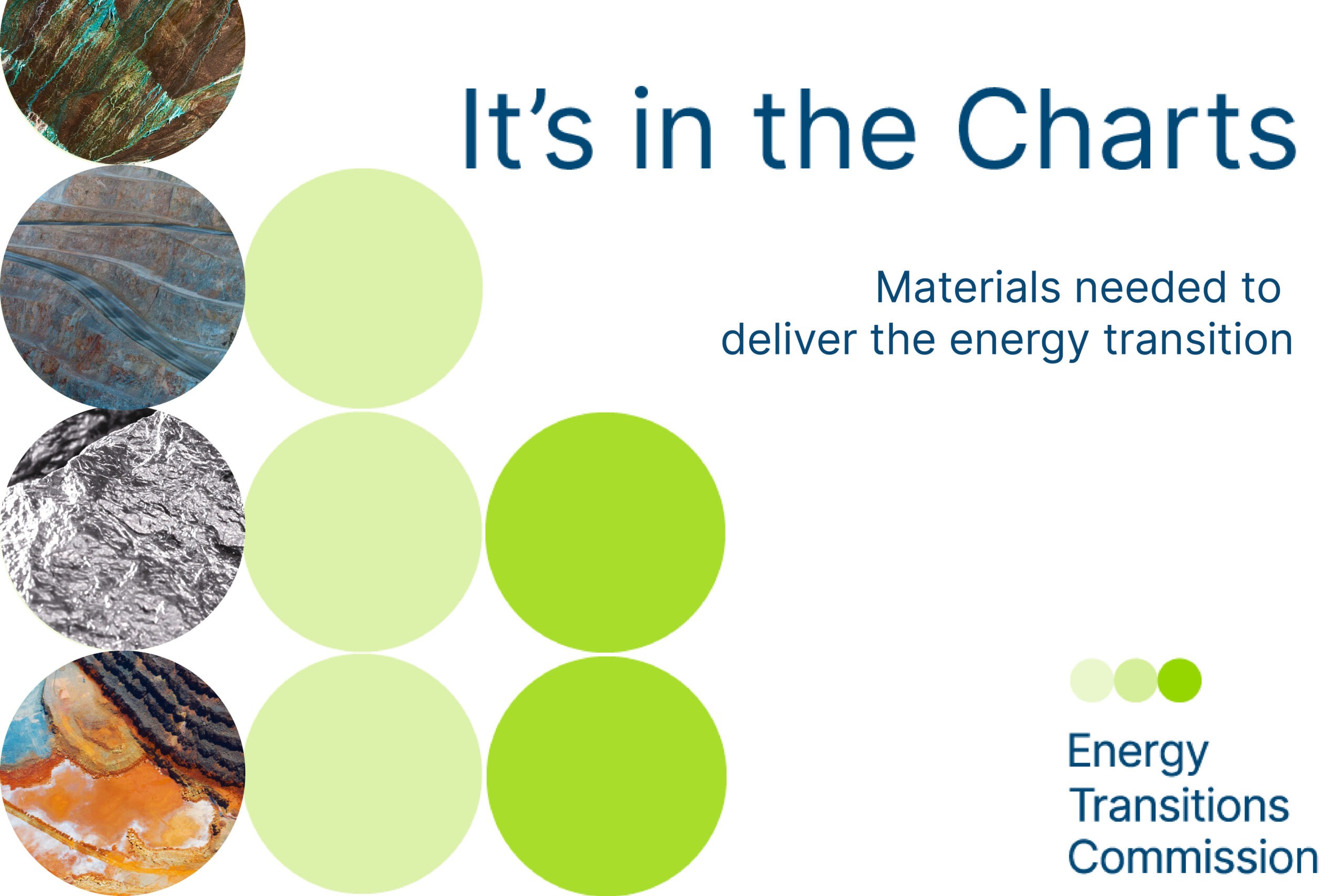Our charts are one of the many ways our thought leadership shapes debate around the complex subject of the energy transition. The chart below can be found in our latest report, Materials and Resource Requirements for the Energy Transition.
All the materials needed over the next three decades to deliver the energy transition are together less than the mass of coal currently produced in a year
Between 2022–2050, the energy transition is estimated to require 6.5 billion tonnes of end-use materials for wind turbines, solar panels, electric vehicles and other technologies. 95% of this material demand is made up of steel, copper and aluminium. The remaining portion consists of much smaller quantities of critical minerals such as lithium, cobalt, graphite or rare earths. This cumulative material extraction compares with the over 8 billion tonnes of coal currently extracted annually.
Measured in tonnes, demands for some of the most important key materials are trivial. For instance, to almost completely electrify all of the world’s road vehicles will require at most one million tonnes annually of pure lithium production between now and 2050. This compares to less than half of the combined mass of all air conditioning units in the EU in 2016.[1] Recycling will provide the vast majority of any subsequent need.
However, increasing supply of these critical energy transition materials sustainably and rapidly remains a challenge to mid-century that requires collaboration from policymakers, industry, regulators and consumers to carefully manage.
[1] CECED (2017), Material Flows of the Home Appliances Industry
 This exhibit was published in the ETC’s Materials and Resource Requirements for the Energy Transition report.
This exhibit was published in the ETC’s Materials and Resource Requirements for the Energy Transition report.
If you would like to reproduce this chart, please let us know.
Interested in receiving these insights in your inbox? Click here to sign up for our mailing list.



